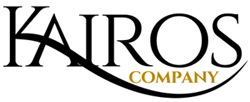Back when I was a young pup starting out in the late 80s, I had a freelance graphic design and computer consulting business that specialized in desktop publishing. I was either doing the design or production work myself, or I was setting up desktop publishing departments at other companies. I’ve always been interested in technology, so early on I had CompuServe and AOL accounts, used bulletin board systems and other early technologies.
In my circle of friends, acquaintances and business associates, I was the first person to “see” the World Wide Web in the early 90s. There wasn’t much to see back then—mostly academic sites, but it was amazing to see a semi-live picture of a coffee pot in Cambridge, England. There were nearly zero commercial sites back then; some of the computer manufacturers like HP and IBM had some rudimentary sites. Pages were extremely simple and plain, with (like a Model T) the background page color being any color you wanted, as long as it was gray.
One day a friend called and said, “hey, my buddy Randy has heard about the Internet, and wants to take a look. Can you show him around?” A week later, after my two-hour Internet tour, Randy was captivated by the Web. At the end of the meeting, Randy said, “I’ve got a great idea for a business and it’s going to be centered around the Web. Do you know how to build websites, and can you build one for me?”
My answer was “Sure. I’d be happy to help. Let’s get started next week.”
The only issue was that I had no clue on how to build a website, didn’t know how to get a domain name, didn’t know how FTP (file transfer protocol—how files get “on” the web) worked; to sum up, I didn’t know anything.
But I knew the answer: books. I went to the bookstore (they were common back then) and loaded up on books about HTML and the Web. A few days later I had a test site up on the Internet, and by the end of the week, Randy and I were working on building a new company. Three months later I quit my “real” job and a string of successful startups followed (Randy’s business idea eventually morphed into a network of radio stations on the Internet and was sold to CMGI).
Since then, I’ve used the same “trick” dozens of times, learning Quickbooks, Photoshop, InDesign, SQL, Javascript, CSS, networking, and most recently, iPhone development.
There are two points I want to make here that are so critical for new businesses. One—unless you are convinced something is really impossible, just say “yes” and figure it out. You’d be surprised what you can accomplish after you’ve said “yes.” The second point: you can learn just about anything by reading about it and diving in. There are resources available (now on the ‘net, but books still work too) on everything from learning HTML to setting up your own webserver.
Just say “yes”—and reap the rewards.
